SSZT919 october 2017 UCC256301
It’s amazing what people will do in order to be the best. For example, athletes will train tirelessly just to shave tenths of seconds off of their race times. Students spend years studying to achieve top honors. Organizations spend decades developing technologies to solve problems that were once only written about in science fiction novels. And finally – nerd alert! – power-supply engineers dedicate themselves to creating converters that are more efficient, with higher density than any converters that came before.
Laugh if you want, but I’ll bet most of you have powered up your circuits and at least achieved personal bests in terms of power density and efficiency that had you outright excited. Maybe you went home and tried to articulate the experience to your spouse or children, only to have them look at you with complete and utter confusion, perplexed at your enthusiasm.
Rest assured, you will receive no such judgment here. Personally, I love the idea of taking something and making it better than it was before. TI has a new controller, the UCC256301, that’s generating a lot of buzz right now because it does exactly that. It takes power supplies that perform well and makes them perform awesome.
The UCC256301 is the newest LLC controller in the TI family, shown in Figure 1. Its features and benefits include integrated high-voltage startup, x-cap discharge, robust fault protection and a new control method that absolutely rocks (more on that later).
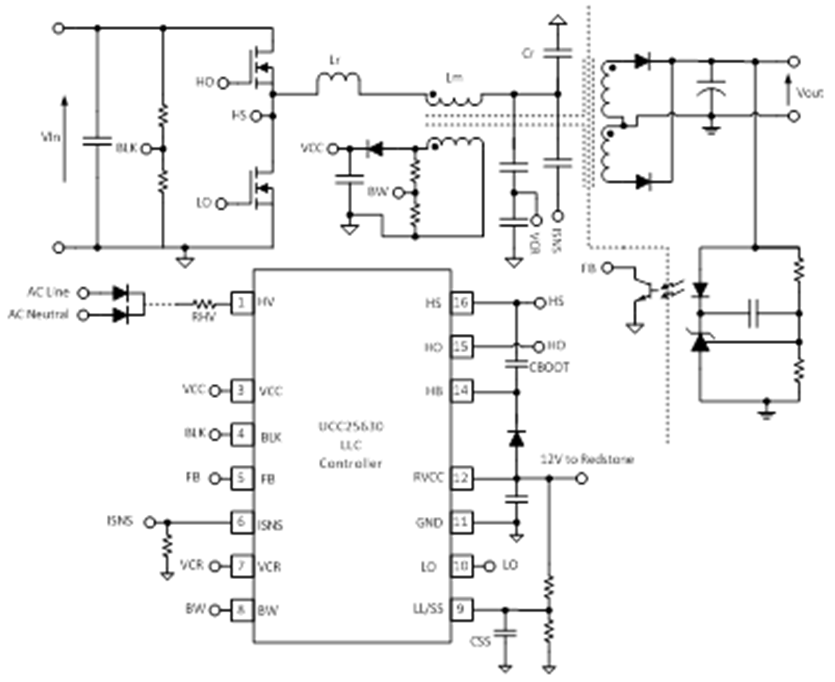 Figure 1 UCC256301 System Block
Diagram
Figure 1 UCC256301 System Block
DiagramIn the process of doing competitive analysis, the UCC256301 beats similar devices in stability margin, ease of design, robust protection mechanisms, light load efficiency and transient disturbance rejection.
By way of a practical example (and in keeping with the geeky theme of this post), I took a commercial gaming system and retrofitted it with the UCC256301. Figure 2 shows the before-and-after load transient response.
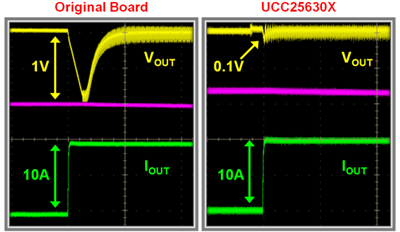 Figure 2 Transient Response
Improvement
Figure 2 Transient Response
ImprovementThe performance of the original board was actually very good. But dude! Look at what the UCC256301 did to it – the load transient response is now a virtual “don’t care.” To a manufacturer, this could mean up to a 20% reduction in output capacitance, not to mention all of the other component savings from heightened performance and integration. The block diagram in Figure 3 illustrates the different system-level circuits that a device like this saves.
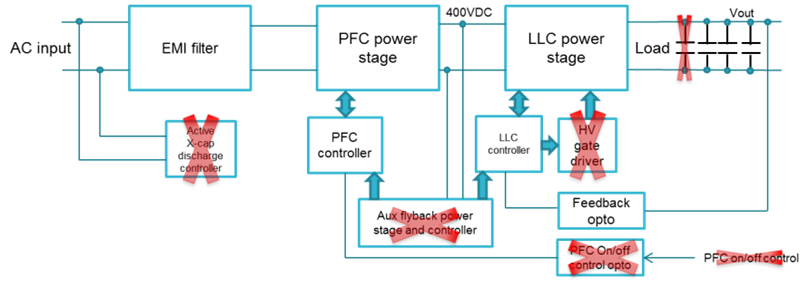 Figure 3 System-level Component
Savings
Figure 3 System-level Component
SavingsIn this same gaming system, I achieved additional performance enhancements on output ripple voltage during burst mode (10x smaller) and light load efficiency (as much as a 10% improvement, Figure 4). On another system, I even measured less than 40mW of no-load power while fully regulating the output in the presence of a high-voltage power-factor correction (PFC) input. In my mind, this exemplifies the concept of upping your game. I tried to tell my wife and kids about it, but got agonizing blank stares in return.
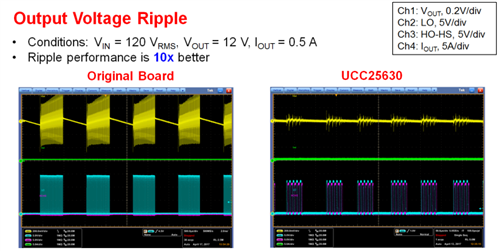 Figure 4 Ripple Improvement
Figure 4 Ripple Improvement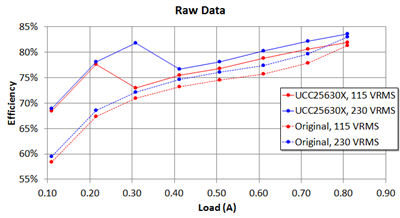 Figure 5 Efficiency Improvement
Figure 5 Efficiency ImprovementThere are many aspects of this device that I could discuss; however, at its heart is a new control architecture called hybrid hysteretic control (HHC). This control architecture combines the best elements of direct frequency-controlled LLC and charge-controlled LLC to come up with something that is better than either. In reality, it is this control method that is responsible for the bulk of the improvements.
So what’s your story? Do you use LLC converters? Do you think this controller is interesting enough that you’d like to learn more about what it can do to up your game? If you have any thoughts on this or anything else, let me know in the comments section below.